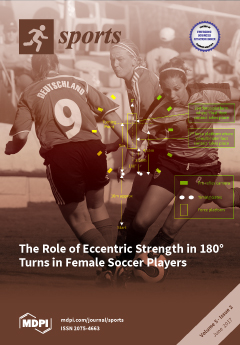The purpose of this study was to investigate the impact of ingesting an amino acid-electrolyte (AAE) beverage during upper body resistance exercise on transient muscle hypertrophy, exercise performance, markers of muscle damage, and recovery. Participants (
n = 15) performed three sets of
[...] Read more.
The purpose of this study was to investigate the impact of ingesting an amino acid-electrolyte (AAE) beverage during upper body resistance exercise on transient muscle hypertrophy, exercise performance, markers of muscle damage, and recovery. Participants (
n = 15) performed three sets of six repetitions—bench press, lat pull down, incline press, and seated row—followed by three sets of eight repetitions at 75% of the estimated 1 repetition maximum—triceps kickback, hammer curl, triceps push down, and preacher curl—with 90 s of rest between sets. The final set of the push down/preacher curl was performed to failure. Prior to and immediately post-exercise, as well as 24, 48, and 72 h post exercise, cross-sectional muscle thickness was measured. Blood samples were collected prior to exercise, as well as 24, 48, and 72 h post-exercise for serum creatine kinase (CK) analysis. No treatment effect was found for muscle cross-sectional area, repetitions to failure, or serum CK. A main effect (
p < 0.001) was observed in the change in serum CK levels in the days following the resistance exercise session. The findings of this study suggest that the acute ingestion of a AAE beverage does not alter acute muscle thickness, performance, perceived soreness and weakness, or markers of muscle damage.
Full article






